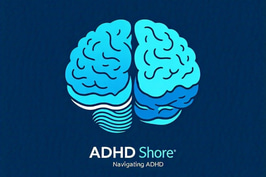Understanding ADHD: An In-Depth Guide
1/7/20257 min read


Introduction to ADHD
Attention Deficit Hyperactivity Disorder (ADHD) is a neurodevelopmental disorder characterized by persistent patterns of inattention, hyperactivity, and impulsivity that interfere with functioning or development. Recognized as a significant mental health condition, ADHD manifests in various forms and significantly affects individuals across all age groups, including children and adults. In clinical contexts, ADHD is classified into three primary types: predominantly inattentive presentation, predominantly hyperactive-impulsive presentation, and a combined presentation that includes features of both inattention and hyperactivity-impulsivity.
The recognition of ADHD has evolved over the years. Initially described in the early 20th century, early accounts focused primarily on hyperactive behaviors in children. Over time, the understanding of ADHD has broadened to encompass a range of symptoms, presenting a more nuanced view of the disorder. The American Psychiatric Association's Diagnostic and Statistical Manual of Mental Disorders (DSM) has played a pivotal role in this evolution, outlining specific criteria for diagnosing ADHD and highlighting its potential impact on various aspects of life, including educational performance, social relationships, and occupational functioning.
It is essential for individuals and society to develop awareness about ADHD. Misconceptions and stigma still surround the disorder, often leading to misunderstanding and misdiagnosis. Increased awareness can foster greater compassion and support for those affected by ADHD and enable better educational and therapeutic interventions. Moreover, contemporary research continues to uncover new information about the biological, genetic, and environmental factors that contribute to ADHD, thereby enriching our understanding of this complex condition. This guide aims to provide a comprehensive overview of ADHD, enhancing awareness and fostering an informed discussion about its implications for individuals and society.
Types of ADHD
Attention Deficit Hyperactivity Disorder (ADHD) is a neurodevelopmental disorder that presents itself in different forms, influencing individuals in various ways. The three primary types of ADHD include Inattentive Type, Hyperactive-Impulsive Type, and Combined Type. Understanding these types is crucial in identifying symptoms and implementing appropriate interventions.
The Inattentive Type, previously known as Attention Deficit Disorder (ADD), is characterized by a predominant difficulty in sustaining attention. Individuals with this type may struggle with organizing tasks, following through on instructions, and often appear forgetful. They may fail to pay close attention to details, leading to careless mistakes in schoolwork or other activities. For example, a student with Inattentive Type might overlook vital instructions during a test, resulting in poor performance.
In contrast, the Hyperactive-Impulsive Type manifests predominantly through impulsivity and excessive movement. People with this type tend to have difficulty sitting still, often feeling restless and fidgeting. Their impulsivity can lead to hasty actions without considering the consequences, which can create challenges in social situations and classroom settings. An example is a child who frequently interrupts others during conversations and struggles to wait for their turn during games.
The Combined Type of ADHD incorporates features from both the Inattentive and Hyperactive-Impulsive types. Individuals with Combined Type experience a mixture of inattentiveness, hyperactivity, and impulsivity, which can complicate their daily functioning. A child displaying characteristics of both types might excel in academics when focused but struggle with remaining quiet and attentive in a traditional classroom environment.
Recognizing the distinct characteristics of each type of ADHD is vital, as it facilitates tailored strategies for support and management, ultimately improving daily functioning and quality of life for those affected by this disorder.
Common Symptoms of ADHD
Attention Deficit Hyperactivity Disorder (ADHD) is characterized by a range of symptoms that can significantly impact an individual's daily life. These symptoms are generally categorized into three main areas: inattention, hyperactivity, and impulsivity. Understanding these symptoms is crucial for identifying potential markers of ADHD, both in oneself and in others.
Inattention refers to difficulties in sustaining attention, following through on tasks, and organizing activities. Individuals with ADHD may frequently make careless mistakes in schoolwork or other activities, often losing focus on tasks that require prolonged mental effort. This symptom might manifest as difficulty listening when spoken to, challenges in following instructions, or an inability to complete assignments. Consequently, inattention can lead to underperformance in academic or professional settings, causing frustration and impacting self-esteem.
Hyperactivity is characterized by excessive movement and an inability to remain still. Individuals may find themselves fidgeting, tapping their feet, or squirming in their seats. Children, in particular, may be seen running around or climbing in inappropriate situations. This hyperactive behavior can cause issues in settings that require calmness and restraint, such as classrooms or workplaces, potentially resulting in social difficulties and strained relationships.
Impulsivity involves acting without thinking about the consequences, which can lead to hasty decisions and regrettable actions. Individuals with ADHD may interrupt others, speak out of turn, or engage in risky behaviors without considering the potential outcomes. This lack of impulse control can contribute to challenges in social interactions, academic performance, and overall life satisfaction.
Recognizing these common symptoms of ADHD is essential for fostering a better understanding of the disorder. Both individuals and families can benefit from awareness around how inattention, hyperactivity, and impulsivity manifest in daily life, paving the way for appropriate support and interventions.
ADHD in Children
Attention Deficit Hyperactivity Disorder (ADHD) significantly impacts children, presenting challenges that can affect both their educational experiences and social interactions. In educational settings, children with ADHD often struggle with maintaining focus, organizing tasks, and following through on assignments. This lack of attention can lead to academic underachievement, where the child may understand the material but fails to complete homework or contribute to class discussions due to distractions. Moreover, impulsive behaviors, characteristic of ADHD, can result in difficulties with peer relationships, as these children may interrupt others or have trouble waiting their turn during activities.
Behaviorally, children with ADHD may exhibit restlessness, excessive talking, or difficulty remaining seated, which can elicit negative responses from both educators and peers. As such, it is essential for parents and educators to recognize early signs of ADHD symptoms, such as consistent inattention, hyperactivity, or impulsivity, to facilitate timely interventions. Early recognition allows for the implementation of effective behavioral strategies, which may include structured routines, positive reinforcement, and individualized education plans tailored to a child's specific learning needs.
To better support children with ADHD in school, educators can adopt strategies that promote engagement and minimize distractions. These may include creating a well-organized classroom environment, using visual aids for instruction, and breaking tasks into manageable components to enhance focus. Incorporating movement breaks and providing opportunities for hands-on learning can also benefit children with ADHD, allowing them to channel their energy constructively. Thus, recognizing the unique challenges faced by children with ADHD and establishing supportive frameworks is crucial in fostering both their academic success and social development.
ADHD in Adults
Attention Deficit Hyperactivity Disorder (ADHD) is often diagnosed in childhood, yet many individuals carry its symptoms into adulthood. In many cases, the hyperactivity seen in children may transition into restlessness or an inner sense of agitation in adults. While some adults experience a decline in impulsivity over the years, others might find that difficulties with attention and focus continue to impact their daily lives.
One of the most significant challenges faced by adults with ADHD is in the workplace. Individuals may struggle with maintaining attention to tasks, meeting deadlines, and following through on projects. This can lead to performance issues, missed promotions, or even job loss in more severe cases. Additionally, many adults with ADHD report a sense of being overwhelmed by responsibilities, which may lead to procrastination or avoidance behaviors.
Relationships also often suffer when ADHD is present. Adults may find it hard to manage commitments, leading to instability in personal relationships or friendships. Communication difficulties, forgetfulness, or emotional dysregulation are common challenges that can frustrate partners or family members, causing misunderstandings and conflict. The burden of these issues can create additional stress and anxiety, compounding the symptoms of ADHD.
Fortunately, there are resources and coping strategies available for adults dealing with ADHD. Strategies may include structured routines to manage daily responsibilities more effectively, using tools such as planners or digital reminders, and engaging in mindfulness or meditation practices to enhance focus. Cognitive-behavioral therapy (CBT) has also shown promise in teaching coping mechanisms and changing negative thought patterns. Support groups, both in-person and online, can also provide valuable community and shared experiences for those navigating the complexities of adult ADHD. By seeking appropriate support and utilizing available strategies, adults can manage their symptoms and lead fulfilling lives.
Diagnosis and Treatment Options
The diagnosis of Attention Deficit Hyperactivity Disorder (ADHD) is a multifaceted process that typically involves a detailed evaluation conducted by healthcare professionals. Initially, a comprehensive clinical interview is performed, which gathers information about the individual's developmental history, behavioral patterns, and current challenges. This assessment often includes standardized questionnaires and rating scales that are filled out by parents, teachers, or caretakers. These tools help to establish the presence, severity, and impact of ADHD symptoms in various settings.
Follow-up referrals may be necessary for a more thorough diagnosis, which can involve consultations with psychologists, psychiatrists, or pediatricians who specialize in ADHD. These professionals may conduct additional assessments, including cognitive and neuropsychological testing, to rule out other possible conditions and to confirm the ADHD diagnosis.
Once diagnosed, several treatment options are available that cater to the unique needs of individuals with ADHD. Medication is often considered a first-line treatment and can include stimulants like methylphenidate and amphetamines, which have been shown to help improve concentration and reduce impulsivity. Non-stimulant medications, such as atomoxetine, may also be prescribed, particularly for those who experience adverse side effects from stimulants.
Other effective treatment options include behavioral therapy, which focuses on developing coping strategies and skills for managing symptoms. Cognitive-behavioral therapy (CBT) specifically aids in addressing negative thought patterns and building better self-regulation skills. Lifestyle changes, such as establishing a regular routine, incorporating physical activity, and ensuring a healthy diet, also play a crucial role in managing ADHD symptoms.
Additionally, support groups offer invaluable resources for individuals with ADHD and their families, providing a platform for shared experiences and coping strategies. This holistic approach—combining medication, therapy, lifestyle modifications, and community support—ensures that individuals with ADHD can lead fulfilling lives despite the challenges they face.
Myths and Misconceptions about ADHD
Attention Deficit Hyperactivity Disorder (ADHD) is frequently surrounded by various myths and misconceptions that can lead to misunderstandings about the condition. One prevalent myth is that ADHD is solely a childhood disorder. While it is primarily diagnosed in children, research indicates that ADHD can persist into adolescence and adulthood. Many adults continue to experience symptoms such as impulsivity, difficulty in maintaining attention, and challenges in organizing tasks. Recognizing ADHD as a lifelong condition is crucial for promoting a comprehensive understanding of its impact on individuals across different age groups.
Another common misconception is that ADHD is caused by poor parenting practices. This belief can perpetuate blame on parents, creating a stigma that is both unfounded and damaging. In reality, ADHD is a neurodevelopmental disorder influenced by a combination of genetic and environmental factors. Research has shown that brain structure and function in individuals with ADHD differ from those without the disorder. This underscores the importance of viewing ADHD through a clinical lens rather than attributing it to parenting styles or external circumstances.
Moreover, some people erroneously conclude that ADHD is simply a lack of willpower or discipline. This notion neglects the complexity of the disorder, which includes difficulties in regulating attention and behavior that stem from neurological differences. Those with ADHD often face significant challenges in their daily lives, which can affect academic performance, career advancement, and personal relationships. Misunderstanding ADHD as a character flaw rather than a legitimate disorder can prevent individuals from receiving appropriate support and interventions.
Ultimately, debunking these myths and misconceptions is essential in facilitating a more accurate understanding of ADHD. By separating fact from fiction, we can foster a more supportive environment for those affected by the disorder, reducing stigmatization and paving the way for better resources and treatment options.
